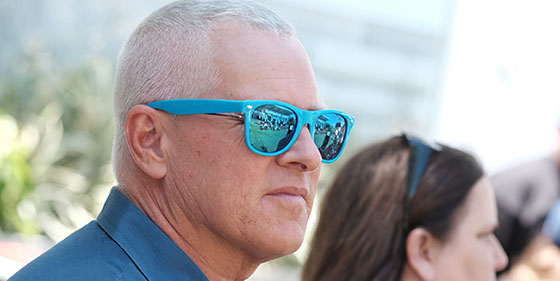Updated, Friday, November 4, 2016, 9:05 a.m.: Los Angeles City Council member Mike Bonin’s district includes pricey coastal enclaves Venice and Marina del Rey, and other high-income pockets of the Westside such as Pacific Palisades. As Los Angeles faces a housing affordability crisis, his constituents are mixed in sentiment about projects that serves lower income brackets — and many are opposed to any new development, period.
“It’s probably one of most expensive pieces of political geography in the country,” Bonin said of his district, speaking on a workforce housing panel at the Los Angeles Business Council summit last week. “And there is sentiment, particularly now, at the height of the market, against a lot more development.”
He has more luck in some areas of his territory. Del Rey, a Los Angeles neighborhood just inland from the Marina and Venice, has been tolerant of his plans to house the homeless, he said, whereas elsewhere he is challenged.
But all of his constituents watch development closely. Nearly every project proposed, even outside of the low-income housing arena, faces opposition, he said. Bonin blamed the lack of an updated community plan, which he said leaves him and his staff endlessly debating each project.
“Get me out of adjudicating every goddamn variance,” Bonin said on the panel, which was moderated by Related California CEO Bill Witte. “I’d rather focus on other things.”
The beach cities, with the temperate weather and consistent foot traffic that magnetize panhandling, have grown weary of absorbing the direct and indirect costs of homelessness. Bonin is asking an already stretched constituency to stretch a little more. And he knows it.
Bonin supports Measure HHH. If passed on Nov. 8, a $1.2 billion bond, funded by 29 years of increased property taxes, would be spent on building 10,000 units of housing for the homeless over the course of 10 years. The tax increase amounts to $9.65 per $100,000 of property value per year. While it is only a 0.01 percent increase, it could tally to thousands of dollars over the three-decade course of the payoff for the multi-million dollar homes in Bonin’s district.
But Bonin believes he might be able to turn the tide by walking his constituents through the plans for homeless housing and affordable developments, and ensuring that they fit Westside aesthetics.
“How do you get folks to buy into the idea of homeless housing in their neighborhoods? It’s a really tough one because when folks hear it, they envision a shelter… with tents outside. And that’s not what we’re talking about,” he said. “So I’ve taken constituents on a bus tour of affordable and homeless housing on the Westside. When you drive by, you can’t tell which building is which.”
One example of a such a public-private partnership is the Gateway Apartments in Marina del Rey. Funding from the County assisted the Hollywood Community Housing Corporation in building the 21-unit, LEED Platinum building on Beach Avenue. It was designed by Brooks + Scarpa and built by Dreyfuss Construction.
Another project, the 23-unit PATH Villas at Del Rey, utilized a combination of state, county, and non-profit money to build a design by the prestigious firm Killefer Flammang Architects. KFA also designed the Ace Hotel, Soho House, and an extensive list of Downtown adaptive reuses such as the Chapman lofts and the Pacific Electric lofts.
Bonin also mentioned the longtime family-owned car dealership Martin Cadillac, which sits at the intersection of Olympic and Bundy Drives. It will be replaced by a mixed-use complex that includes units set aside for affordable housing, 15 percent workforce and 5 percent homeless.
The Martin Family Expo Center will hold a total of 516 residential units. There will also be a 50,000-square-foot grocery store, 40,000 square feet of retail, 9,000 square feet of restaurants, and 200,000 square feet of creative offices.
